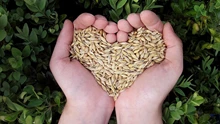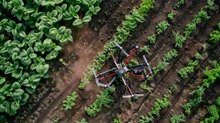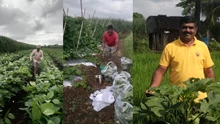
It's typically too late by the time plants show evident signs of suffering. Even if farmers catch a fungal infection or a pest infestation in one part of their fields, they'll have to apply an expensive product to the rest of their farm, in addition to losing the crop in that area. A business located in California, USA has an unusual solution: smart seeds that give plants a voice.
What is the Process?
Of course, not literally, but InnerPlant is manipulating plant genetics so that crops can convey signals that farmers can read and translate using drones, smartphones, and satellites.
"When [plants] are attacked, they have... a biological reaction that protects them," InnerPlant CEO Shely Aronov recently told me on the TechFirst podcast. "Their response is both immediate and detailed. So they respond one way to pathogen stress, such as fungal or insect pressure, and another to nitrogen deficiency, water stress, and other factors."
"We engineer the coding of the crops in order to get them to communicate back." So, as a result of the stress, they can produce a protein in their leaves that they wouldn't otherwise produce... and that protein fluoresces."
Farmers won't be able to see the florescence the plants produce because it isn't in the visible spectrum for humans. It can, however, be seen with a simple smartphone and a filter, or with a multi-spectral camera. Farmers don't have to stroll across thousands of acres of fields holding their phones up to their crops; instead, they can use a drone, a sensor linked to a tractor, or satellite imagery for very big farms.
Successful Trial:
"One of the interesting studies we just finished in a greenhouse was a drought trial between the nano-bio sensors and ordinary crops," explains Aronov. "The simplest thing for us to test is drought; you don't need fungus or anything like that." And what we noticed was that we stopped watering the plants and began draughting them. We started seeing our signals show up after about three days, and it took another three or four days before we observed visible symptoms of wilting. The plants were dead by day nine."
In today's world, if farmers notice a crop is too dry, they only have a few days to remedy the situation before serious consequences arise. The InnerPlant technology theoretically gives them twice the time to respond and combat the situation.
While drought is the most obvious signal for a farmer to respond to everyone knows whether it has rained recently or not- other conditions such as fungus and pest attacks may not be as obvious, especially if they originate in far-off fields that farmers can't visually inspect on a regular basis.
Aronov, on the other hand, has a tremendous vision.
"What we want to accomplish is not simply build smart seeds... we want to establish an ecosystem that offers value to farmers," Aronov adds, noting that "it won't be one company or one technology that changes that." "It'll take everyone getting on board, better seeds, better technology, better inputs, better application methods, and better data platforms." We can make something fresh if we work together."












